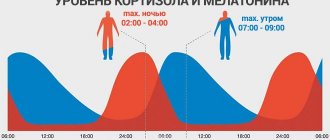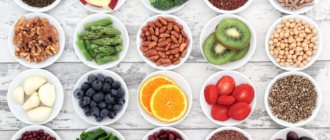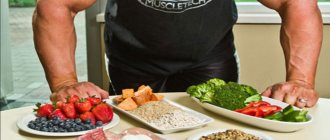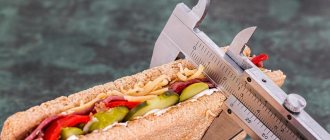You are lean, lanky, and burn calories quickly. Everything you eat is processed by a crazy metabolism, which makes gaining weight an incredible challenge. Don't worry, ectomorph! You're not alone, you're just someone who has a hard time gaining weight. It's difficult, but not impossible. You just have to follow your own “how to get huge” to-do list. Every ounce of energy you have should be directed towards muscle growth. It is necessary to harmonize your training and nutrition. Nutrition is your rifle, training is your bayonet, mass gain is your goal. Follow these 10 tips and you'll get ahead!
We hope you're hungry, because you're in for a huge dose of advice for struggling guys.
So…
1) Nutrition for weight gain
Until you get used to the feeling of being stuffed, you will not be able to consume the required amount of healthy food in large quantities. And this is necessary. Don't eat low-calorie carrots, choose high-calorie foods. Most bodybuilders advise eating 40 kcal per 1 kg of weight to gain muscle mass. If you fill up on all those calories with vegetables, fruits, oatmeal and egg whites, you'll go crazy. We don't want to say that this food isn't healthy - it's just not what you need to gain weight. Choose more calorie-dense foods such as pureed vegetables, dried fruit, whole eggs, oatmeal and steak.
The main rule is that you should consume more calories than you expend.
The basis of the diet should be complete meals of solid food, do not rely on protein shakes .
A lot of. A lot of food. Now that you understand the importance of meal timing, let's talk about calories. 18 calories per 1 kg is a diet for a loser. To gain weight, start with 30 calories per kilogram. Start eating 30 calories per 1 kg of your weight for 2-4 weeks, and then increase. For example: a man weighing 100 kg should eat 3000 calories to start and increase this figure after 2-4 weeks. As soon as possible you should reach the norm of 40 calories per 1 kg of weight . If you weigh 80 kg, you should consume about 3200 kcal. Overcome this threshold - and then everything will become easier.
From experience, few people have common sense. People are beginning to unbridledly strive for “the more the merrier.” People want short periods, quick results. This is impossible in this sport. To be successful you need time, time to figure out what works for you and what doesn't. Most guys are like that, when you tell them the truth, they stop wanting big hands.
So, if you weigh 100 kg, you don't need to rush the timing and start with 4000 calories right away. Whether you're picking up or dropping, don't use the shock technique. Never subject your body to a sharp reduction or increase in caloric intake. After all, it’s hard to gain even a kilogram of good muscle mass, so why risk it by using shock therapy, as a result of which you will immediately lose half a kilo of this mass?
Let's say you start eating 400g of protein instead of 200g. How should your body incorporate this supplement into its metabolism? It will simply throw away half of it. Plus you will find it so difficult to eat so much that you will quit after 2 weeks. Remember - everything has its time. Gradual increases are important. Start slow, build up gradually.
Training programs for gaining muscle mass at home
Full Body Split for Beginners
Basic exercises for gaining muscle mass involve a large number of muscle groups, which stimulates testosterone production and muscle growth. In all exercises, pay attention to technique. If you are not sure how to do it correctly, watch the video tutorials.
Full body workout for beginners
| 1. Squats with a barbell 2 x 12 | |
| 2. Lunges with dumbbells 2 x 12 | |
| 3. Seated calf raises with barbell 2 x 15 | |
| 4. Bent-over dumbbell row supported on a 3 x 12 | |
| 5. Push-ups 3 sets (until muscle failure) | |
| 6. Arnold press with dumbbells 2 x 10-12 | |
| 7. Swing dumbbells to the sides 2 x 12-15 | |
| 8. French press 2 x 12 | |
| 9. Barbell curl for biceps 2 x 12 |
Program for intermediate level of training
Upper and Lower Body Split for Intermediate Fitness Levels
A top and bottom split is usually the next step after a split for all body parts. It involves a greater variety of exercises, since you will work with different parts of the body in each of the 2 workouts. Train your upper body on Mondays and Thursdays, and your lower body on Tuesdays and Saturdays.
Upper body
| 1. Bench press with medium grip 4 x 8 | |
| 2. Bent-over barbell row 4 x 8 | |
| 3. Push-ups 2 x to failure | |
| 4. Military standing barbell press 2 x 8-12 | |
| 5. Standing one-arm dumbbell swings 2 x 2 | |
| 6. Close-grip bench press 3 x 8 | |
| 7. Standing Dumbbell Curls 3 x 10 |
Lower body
- Barbell Deadlift – 4 x 6-8
- Front Squats - 4 x 6-8
- Dumbbell Raises – 3 x 12
- Barbell Lunges – 3 x 25
- Squat Jumps – 3 x 25
- Standing calf raises with dumbbells - 3 x 15
Advanced program
Split for each body part for advanced training levels
Monday: hands
- Barbell curl - 3 x 8
- Close grip bench press - 3 x 8
- Alternating Dumbbell Curls – 2 x 10
- Dumbbell Overhead Extension – 2 x 10
- Seated dumbbell curls - 2 x 15
- Lying arm extension with overhand grip – 2 x 15
Tuesday: chest
- Bench press on an incline bench with a medium grip - 3 x 15
- Dumbbell Bench Press – 3 x 8-12
- Lying Dumbbell Lateral Raises – 3 x 12
- Push-ups - 2 sets (until muscle failure)
Wednesday: rest
Thursday: back
- Bent-over barbell row with overhand grip – 2 x 8
- Bent-over barbell row with underhand grip – 2 x 8
- Bent-over T-bar row – 3 x 12
- Bent-over Dumbbell Rows – 3 x 12
- Back extension with barbell on shoulders - 3 x 10
Friday: shoulders
- Seated Dumbbell Press – 3 x 8-12
- Dumbbell swings to the sides while standing - 3 x 12
- Seated dumbbell lateral raises – 3 x 12
- Bench press sitting behind the head - 3 x 8-12
- Standing Barbell Shoulder Raise - 3 x 8
Saturday: legs
- Barbell Squats – 3 x 5-8
- Deadlift - 3 x 5-8
- Dumbbell Lunges – 3 x 12
- Barbell Lunges – 2 x 12
- Dumbbell Raises – 3 x 15
- Standing calf raises with dumbbells - 4 x 15
Sunday: rest
2) The importance of sleep
Guys like you usually have weaker recovery abilities in the body. If you don't get enough sleep, this can seriously affect your results. Focus on getting at least 8 hours of sleep, preferably nine. Going to the gym again without enough sleep will only make matters worse. Rest, recover, sleep and grow!
If you approach the issue scientifically, here are the facts: 80% of growth hormone is produced during sleep. For example, a thirty-minute nap during the day will benefit you.
3) To gain weight, not only eat, but also drink calories
Liquid calories don't fill you up as much as solid calories, so this help will make it easier for you to reach your goal.
In addition to your pre- and post-workout protein shakes, make it a goal to drink at least one more protein shake throughout the day. Include as many high-calorie ingredients as possible in this smoothie: natural nut butters, seeds, coconut oil, oats, powdered milk, frozen fruit, Greek yogurt and/or cottage cheese. If this is difficult to achieve with your daily regimen, just drink a gainer.
Daily diet
Let's give an example of how to eat when gaining muscle mass (as they say, without water and nonsense):
First breakfast:
- whey protein - 1 scoop;
- orange - 1 large.
Lunch:
- eggs - 2 pcs. Make a chatterbox out of them;
- whole grain bread - 2 slices;
- soy sauce (to taste).
Late breakfast:
- whey protein - 1 scoop;
- sprouted wheat grains - ½ cup.
Make a water-based cocktail from these ingredients.
Dinner:
- boiled chicken breast - 80 - 90 g;
- brown rice - 100 gr.
Afternoon snack:
- Greek yogurt - 200 g;
- canned pineapple - ¼ cup.
Mix.
Dinner:
- pangasius fillet - 170 g;
- brown rice - 100 g;
- broccoli - 1 cup;
- green salad (with spinach) - 2 cups;
- olive oil - 1 tbsp. spoon;
- balsamic vinegar - 1 tbsp. spoon.
Immediately after dinner, drink a sports supplement creatine - 5 g (recommended).
Before bedtime:
- low-fat cottage cheese (up to 3% fat) - 150 gr.
Helpful advice:
Do not overly diversify your food at the initial stage to make it easier to calculate the calories consumed. Over time, you will remember the caloric content of the main products of your diet.
This means that your diet should be based on healthy and nutritious foods that will not only promote muscle growth and strength, but also provide high levels of vital energy. This is what nutrition looks like for gaining muscle mass for the day. In other words, we calculate the nutritional value and energy value of everything we eat during the day. We control our weight at the end of the week. If weight gain does not occur, add 500 calories to your daily diet . Therefore, it is important to write everything down initially in order to analyze the results later. When weight gain occurs due to adipose tissue, add short runs.
4) Skip isolation exercises for muscle mass
As you know, all exercises are divided into:
- multi-joint (this includes exercises with a barbell, dumbbells, and body weight)
- isolating (work on simulators and various blocks).
The first differ from the second in that the first are basic, essential for gaining muscle mass, and the second are already grinding, turning beautiful details from the total mass. Many people don’t understand this, they come to the gym and start working on their triceps from the first day. Do not do that! Before making roses on the cake, you need to bake it. Shape your body first, then get to the details!
Basic exercises increase muscle mass. Our body adapts perfectly to any conditions; to start growth processes it must be loaded to the maximum. You need to strain several muscles (from two), the load should be super-heavy (we achieve supercompensation). Basic multi-joint exercises aim to engage as many muscles and more than one joint as possible. An indicator of an athlete's progress is the total weight that he is able to lift.
Benefits of basic exercises:
- comprehensive training of a very large muscle mass;
- basic training burns more calories;
- the concentration of hormones increases - anabolic (testosterone) and corticosteroid (growth hormones);
- nutrient consumption increases;
- after training, the concentration of pleasure hormones increases;
- metabolism accelerates;
- Potency increases.
Don't do those isolation exercises you love so much. I hate to crush my dreams, but 10 sets of triceps curls won't give you huge arms. Instead of triceps and biceps exercises, choose presses. Set yourself a goal of serious weights and give up the rest of the crap.
And remember: building the body does not happen in the gym, it happens with us at home, at the table and in bed. Your main task is to create stress and then put the right foods into your body. Then the result will not be long in coming!
Hurry up to the gym and practice!
How to build muscle mass at home
Do you want to transform your body, but don't have the opportunity to go to the gym? No problem! Basic exercises for gaining muscle mass can be performed at home, although you will need to buy some equipment to do this. The programs for home weight training will help you achieve your desired results as quickly as possible!
Are you someone who prefers to train in the comfort of your home rather than in a big, noisy gym? Too busy with work, school, kids to go to the gym every day? Or does your budget not allow you to purchase a subscription?
Regardless of the reason, you can improve your physique at home using certain additional equipment. Using a bench, a barbell, or a set of dumbbells, you can build muscle at home, burn fat and build the body you've always dreamed of. Each home weight training program is designed for a different fitness level.
5) Pump up your cardio
You've probably heard that "hard gainers" (i.e. people who have a hard time gaining muscle mass) are advised to give up cardio altogether. There is a grain of truth in this, but it is not completely true. When done correctly, there is room for cardio in a hardgainer program. Plus, you should never miss the opportunity to exercise your most important muscle—your heart. Big muscles won't stay big for life, and you'll still need a heart.
For these purposes, do low- to moderate-intensity cardio for 20-30 minutes. 2 or 3 cardio sessions per week will improve heart health, increase the rate of delivery of nutrients to the heart and reduce recovery time.
How to determine your body type
Although genetic predisposition is not a decisive factor, it is still very important. Your body type can tell you a lot about muscle growth and what you need to do to achieve it. Therefore, let's take a closer look at what types of body structure there are.
Ectomorphs
If you have a thin physique and somewhat narrow shoulders with thin wrists, and your weight is slightly below normal, then most likely you are an ectomorph. Gaining weight will be a little more difficult for you than for others. You are naturally thin and have very little muscle, but it is also not easy for you to gain fat.
Ectomorphs are characterized by:
- Fast metabolism;
- Small percentage of fat mass;
- Narrow shoulders;
- Flat chest;
- Thin wrists;
- Thin bones of the skeleton;
- Difficulty gaining weight;
- Not very much muscle strength.
Just because you are this type doesn't mean you can't build muscle. What this means is that you can eat more and be significantly less likely to gain fat.
In a recent article, we talked in detail about how to gain weight for a man, and these tips are perfect for a skinny guy.
Your diet should have enough protein from 1.2 to 2 grams per 1 kg of body weight, eat plenty of carbohydrates from 5 grams per 1 kg or more, and also consume polyunsaturated fats, which should make up approximately 20% of the daily diet. Eat 15-22.5% more calories than you need on a weight maintenance diet.
Mesomorphs
Are you athletic and everyone was jealous of you in your final years of school? Is sport a natural part of your life and has building muscle ever been a problem for you? If you nod affirmatively while admiring your V-shaped torso in the mirror, consider yourself lucky to be a mesomorph.
Mesomorphs are characterized by:
- Average body type;
- Tightness with muscle mass;
- Strength without any additional training;
- V-shaped torso (wide shoulders with narrow hips);
- Broad shoulders and chest;
- Bones and joints are medium in size.
Mesomorphs have collected all the best in themselves. On the one hand, they tend to remain thin like ectomorphs, and on the other hand, they have the ability to build muscle, like endomorphs.
Building muscle mass is easy for mesomorphs, but you shouldn’t let your guard down. Be sure to eat protein, approximately the average amount of carbohydrates, especially after and before workouts, and the required amount of fat. To build muscle, consume 10-20% more calories than when maintaining weight.
Endomorphs
Endomorphs are on the upper end of normal weight. This type is characterized by large, stocky figures, while they themselves are naturally strong, but are prone to gaining excess weight.
Also, endomorphs have an easier time building muscle mass than others. It seems that these guys just need to look at the sports equipment and they are already pumped up. However, the same goes for food.
Endomorphs are characterized by:
- Ease of gaining muscle mass;
- Large bones;
- They are naturally strong;
- Slow digestion;
- Fast weight gain;
- Difficulty losing excess weight;
- In general, slightly higher weight than is usually typical for a given height;
- Stocky build.
If someone from above created any type of figure for gaining weight, it is endomorphs. With the right nutrition program, they can easily build muscle.
But everything comes at a price, and people with this body type have to put in some effort to avoid gaining fat. The diet in this case should consist of proteins, and you also need to carefully monitor the amount of carbohydrates consumed. Fats must be consumed according to your body's requirements. When working on muscle mass, eat no more than 10-20% of calories from normal to maintain weight.
7) Heavy weights, long rest
Since you're lifting serious weight, give your body enough rest to allow your strength to return. If you used to rest for about 30 seconds, then we have news for you: long rests mean more strength, which in turn means heavier weights, which leads to more reps on those weights, which means more mass. Try resting 2-3 minutes between sets.
If you start forcing yourself to do an exercise without resting, you won't see much progress. Allow your body to rest as much as it wants.
Sources of nutrients. BZHU calculator
The diet should be based on a healthy ratio of essential nutrients:
- proteins - the main building material - about 30%;
- fats - the main material for the synthesis of vital hormones - about 20%;
- carbohydrates are the main (most convenient for the body) source of energy 50-60%.
Insert your weight in kilograms into the top field of the calculator.
You have received the daily amount of BJU in grams for gaining muscle mass based on the above ratio.
The main thing about proteins
The most important thing is not only the quantity, but also the uniform intake of protein into the body throughout the day.
The value obtained from the calculations must be divided by the number of meals. Let's look at an example: let's say you get 150 grams of protein per day, and you eat 6 times a day. Divide 150 by 6, you get 25 grams per meal.
This is the ideal scheme for protein intake into the body (if possible, at regular intervals ). Numerous experiments have shown that taking 20-30 grams of protein triggers protein synthesis in the muscles. When consuming more, this process does not speed up; by analogy, if you press the switch harder, the light bulb does not burn brighter.
Best Sources of Protein
Eggs are rightfully considered the best source, as they contain all the necessary amino acids and their biological value is 100.
Dairy products are the most affordable, complete source of protein with high biological value - 85-95. 1 liter of any milk contains as much as 30 grams of protein. The most significant disadvantage is that many are lactose intolerant. But this problem can be easily solved by taking lactase tablets (“Lactazar”).
Meat (with the exception of fatty pork) - its digestibility and biological value is slightly lower than that of dairy products and, especially, eggs. But one big advantage outweighs all the disadvantages - it has very little fat (chicken fillet has 1-2 grams of fat per 100 grams). In a situation where we want to reduce the amount of fat in the diet, but get a large amount of protein, we have two options: eat the protein and separate the yolk, or take lean meat.
Fish is not inferior to meat in all respects. But it contains a lot of Omega 3 - polyunsaturated fatty acids.
Incomplete protein sources
In our case, only two products are of interest: nuts and soy. Because all the others contain a lot of carbohydrates, and with their help we will not be able to gain the required amount of protein, since we will over-accumulate the required amount of carbohydrates.
Nuts - good digestibility, but low digestibility - 30-35%. For those people who say that nuts have more protein than meat, it can be explained that most of the protein from nuts is simply not digestible. The biological value of nuts is two times lower than that of eggs. For comparison: 30 grams of protein from eggs will be completely absorbed, and only 10 grams of protein from nuts. At the same time, the biological value is 50-60, that is, we get 5 grams of complete protein.
Soy is the only exception. It cannot even be called an incomplete protein, since its biological value is 96, more than meat. Loses in digestibility - 48%. Half of the soy consumed is simply not digestible.
Often we do not have the opportunity to take nutritious food. Here, sports nutrition - whey protein - will be your lifesaver. When taking it, you can quickly gain the required 20-25 grams in those moments when it is impossible to eat normally. This has made it one of the most popular dietary supplements among athletes.
Foods - sources of carbohydrates
Buckwheat is the undoubted leader in all respects. 12 grams of protein, 72 grams of carbohydrates and 10 grams of fiber per 100 grams. Gives a feeling of fullness - 2-4 (up to 6 hours). This is useful for athletes who are cutting and losing weight. A person remains full for a long time on a small amount of carbohydrates. This may be a disadvantage when gaining muscle mass.
Brown rice is the favorite of all bodybuilders. Gives short-term satiety - 2 hours. Proteins - 7.5 g, carbohydrates - 62 g, fats - 2.5 g, fiber - 9.7 g per 100 g. Due to its short satiety period, it is an important product for weight gain.
Oatmeal is the number one source of carbohydrates for breakfast. Lots of fiber - 11 g. A short feeling of fullness, after 1-2 hours a feeling of hunger appears. Another plus is that it can be consumed raw, as it requires virtually no cooking. You can quickly make a cocktail from it:
- 50 grams of oatmeal;
- 0.5 l of milk;
- 30 grams of whey protein (as needed).
Beat with a blender.
Pasta made from durum wheat contains 11 grams of protein, carbohydrates - 68 grams.
There is quite a bit of fiber - 6 grams. A good choice for gaining muscle mass as they have a medium glycemic index and can be eaten in a fairly large serving. During the day, you can easily reach the norm of slow carbohydrates if you give preference to pasta. Potatoes - protein - 2 g, carbohydrates - 16 g, very little fiber - 1.4 g. Therefore, it is recommended to take it with vegetables (greens, cucumbers). Baked potatoes are the most preferred because they are slow to digest. When potatoes are fried, the glycemic index increases and digestibility improves.
Fats
This is the most important source of energy.
50-60% of the body's energy supply comes from fats. The energy value of 1 gram is approximately 9 kcal. For comparison: proteins and carbohydrates have 4 kcal. 60% of all brain cells are made up of fat. In addition, they are part of all natural steroid hormones. Vitamins A, D, E, K, which are vital for the body, can only be dissolved in fats. All fats are divided into two types: saturated (animal) and unsaturated (vegetable). Unsaturated - Omega 3, Omega 6, Omega 9. These fats are not synthesized in our body, so they must be included in our diet with food. They are found in large quantities in nuts and various oils. Also, large amounts of unsaturated fats (fatty acids) are found in various fish products. The rate of fat consumption in food is 0.5-1 g per 1 kg of weight. In this case, the ratio of saturated - unsaturated is preferably 25%/75%. Lack of fat can have a very bad effect on your health - hormonal disorders. Another nuance related to fats. Vegetables are much cheaper than animals. Because of this, technology emerged for the production of trans fats - cheap unsaturated fats that are artificially saturated with carbon. They should be avoided if possible due to the fact that they are harmful to the body. They are found in most finished products and lead to the following diseases: coronary heart disease, Alzheimer's disease, diabetes mellitus.
 Don't be afraid of fat
Don't be afraid of fat
If you're a hard gainer but also wary of fat, we have a problem. Healthy fats are a hardgainer's best friend because they're loaded with calories and muscle-building properties. Don't sacrifice your carbohydrates for fat; include enough of both in your meal plan.
As for fats, you don’t need to add them specifically to your diet. Fats will come from the food you eat - eggs, chicken, beef. On the other hand, it is wrong to think that fats make you fat. Proper fats are an essential element of nutrition. We're talking about omega-3 and omega-6. But remember that their number must be in strict proportion. The more omega-6 you eat, the more omega-3 you should have. Moreover, we usually consume omega-6 fats in abundance, but omega-3 is always in short supply.
A lack of omega-3 fats causes a lack of prostaglandins, which control muscle growth. So include flaxseed oil, fish oil and nuts in your diet.
Results for gaining weight at home
Of course, home workouts have certain limitations, but this does not mean that they cannot be done to gain muscle mass at home. You just need to purchase the necessary equipment. As you've seen, there are many muscle-building exercises that require nothing more than a barbell, a bench, and a set of dumbbells. So stop making excuses like you can't build a great body because you can't go to the gym. Follow the given programs and achieve the desired results!
Source: https://www.bodybuilding.com/content/building-the-perfect-body-at-home.html
9) Choose the right carbohydrates
Load up on carbs after your workout! After exercise, your body begins to rebuild itself, so give it substances to restore its glycogen supply!
When it comes to carbohydrates, choose one carbohydrate resource and stick to it.
The body may work less well on pasta, rice, bread and other starchy foods. With over 90% carbohydrates from oatmeal, this is a good choice. Not instant oatmeal, but plain oatmeal. It is also a good source of fiber. You need to eat at least 500 g of oatmeal per day. That's about 2000 calories. Fats such as olive oil need not be added to the diet. If we eat natural peanut butter or salmon, the fats will already be there. Well, yes, the food bill is over 500 bucks a week. When you're bodybuilding, you can't eat crap. A bodybuilder's diet is an expensive proposition. This is another victim.
Principles of proper nutrition for building muscle
There are simple rules that everyone who is interested in how to quickly build muscle should follow. They are as follows:
- Eat quality food. Only natural products will provide the body with the nutrients necessary for muscles. Antioxidants, contained only in high-quality food, also fight cancer, skin and other dangerous diseases.
- Don't skip breakfast. The real problem of modern city dwellers is the absolute lack of time in the morning, so they neglect their morning meals. This is wrong: it is not recommended to leave the house without having breakfast.
- Count calories. To track your results, you can keep a food journal, which records all the calories consumed and the proportions of elements.
- Supplement your diet with carbohydrates. The norm is 4-5 grams per 1 kilogram of current weight. They promote muscle growth and the development of endurance during intense physical activity.
- Prepare healthy foods in advance. There should always be a supply of protein food in the refrigerator so that when you come home, you have the opportunity to have a full dinner, and not pounce on chips or convenience foods bought in the nearest supermarket.
- Eat at night. The ideal product that can be eaten 20-40 minutes before bedtime is low-fat cottage cheese with nuts or seeds. Casein, which is part of it, coagulates in the intestines and guarantees a continuous supply of amino acids to the body, which have the property of slowing down catabolism.
- Plan snacks between main meals.
- Eat enough calories. The optimal calorie intake is calculated based on your current weight: there should be 40-50 kilocalories per kilogram of body.
- Include foods rich in healthy fats in your diet. They participate in the construction of muscles, protect joints, and increase testosterone production. You need to consume 0.5 grams of fat per kilogram of body weight.
Mode
How should you eat right to gain muscle mass? Of course, to speed up the flow of nutrients into the blood, you should eat 5-6 times a day in small portions. For an average man weighing 80 kg, the norm of consumption is considered to be a portion of food of 500-600 kcal. By increasing the portion, you can make sure that excess calories turn into fat, and this is extremely undesirable.
The last meal should always be before bed; it guarantees muscle growth and recovery during the rest period. A full “night” portion contains slow-acting protein and healthy fats.
Top 10 Foods for Muscle Growth
From what you need to eat to gain muscle mass, we note those foods that increase the body's endurance and nourish it with useful substances:
- Beef meat. It contains iron, B vitamins, zinc, proteins and amino acids that stimulate weight gain.
- Chicken fillet. Prefer boiling, stewing, baking or steaming to maximize the preservation of microelements that help build mass and improve bone strength.
- Cottage cheese. Rich in calcium, vitamin B12, maintains muscle tone.
- Chicken eggs. Contains vitamin D, fats, amino acids, high-quality proteins, proteins, and other vitamins. They are very healthy, but you shouldn’t get carried away with them: it is not advisable for men to eat more than 6 eggs a day, and for women – more than 3.
- Fatty fish. Saturates the body with protein, omega-3 acid, helps maintain optimal weight.
- Oat flour. It contains carbohydrates and an impressive amount of coarse fiber. Products prepared from it saturate the body for a long time.
- Whole grains (brown rice, wheat). They give strength, vigor, endurance, nourish the body with useful substances, and normalize the functioning of the stomach.
- Nuts. Needed for normal functioning of the cardiovascular system, ligament elasticity and muscle growth. Nuts contain many healthy fatty acids.
- Dairy products. Whey, milk and kefir strengthen and promote normal delivery of anabolic acids to the muscles.
- Buckwheat. A nutritious product containing carbohydrates, amino acids, and other microelements for muscle growth and the normal functioning of the gastrointestinal tract.
Diet
So, what should you eat to gain muscle mass? A sample diet looks like this:
Breakfast:
- egg omelet;
- black bread;
- 70 grams of canned corn;
- a bunch of grapes or pear;
- black tea with raspberry jam.
Snack:
- cheese sandwiches;
- a glass of kefir or juice;
- a handful of dried fruits: raisins, dried apricots, prunes or nuts.
Dinner:
- soup;
- potatoes with meat or fish;
- vegetable salad;
- compote or juice.
Snack:
- bananas;
- oatmeal;
- tea with a small piece of dark chocolate.
Dinner:
- boiled rice or buckwheat porridge;
- 70 grams of canned green peas;
- tuna;
- apple or berries;
- green tea.











